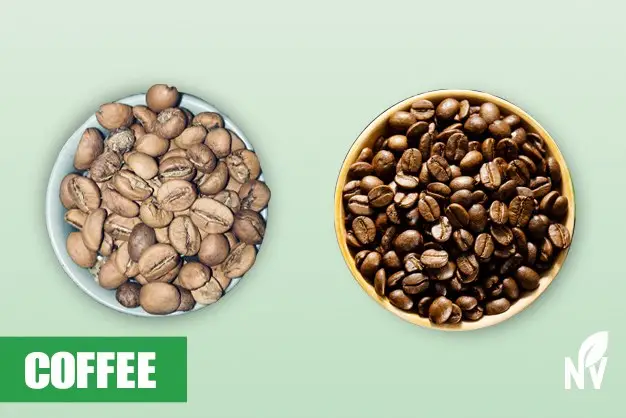Introduction
The world of coffee is vast and diverse, with numerous varieties, processing methods, and roast profiles. As a coffee importer, understanding how to identify high-quality coffee is essential for making informed purchasing decisions. The quality of coffee can significantly affect your brand’s reputation and the satisfaction of your customers. Whether you’re looking to enhance your existing inventory or build a new line of premium coffee, recognizing the key factors that define high-quality coffee is crucial. This guide will help importers and wholesalers navigate the complexities of coffee quality, providing valuable insights from experts in the field. For more information on premium coffee, visit naturevalleyuae.com.
1. Understanding Coffee Quality
The coffee industry is filled with a range of grades, from low-quality commercial beans to high-end specialty coffee. Coffee quality is influenced by a combination of factors, including the bean’s origin, processing methods, and storage. Specialty coffee, defined by strict quality standards and traceability, is generally considered to be of the highest quality. These beans typically score above 80 points on the Specialty Coffee Association’s scale, meaning they exhibit distinct, complex flavors and aromas. For importers, understanding the basics of coffee grading and knowing how to assess quality is essential for selecting the best beans for your business.
2. What Makes Coffee High-Quality?

High-quality coffee is defined by its distinctive flavor profile, clean taste, and consistency. Several factors come into play when determining the quality of coffee, including:
-
Origin: The geographical location where the coffee is grown affects its flavor. For instance, Ethiopian coffee is known for its fruity and floral notes, while Colombian coffee has a balanced and nutty profile.
-
Processing Method: How coffee is processed (washed, natural, or honey) impacts its taste. Washed coffees tend to have a cleaner, brighter taste, while natural coffees are often more fruity and complex.
-
Freshness: Freshness is crucial in coffee quality. Beans that have been freshly roasted retain more aroma and flavor, making them a superior choice.
-
Roast Profile: The roasting level, whether light, medium, or dark, can bring out specific characteristics of the beans, influencing the final taste.
These components all work together to create a coffee that offers not only a pleasant flavor but also an experience that resonates with coffee enthusiasts.
3. Why Identifying High-Quality Coffee Matters for Importers
For coffee importers, recognizing high-quality coffee is essential for maintaining a competitive edge in the market. By sourcing premium beans, businesses can offer superior products that stand out in the market. High-quality coffee often leads to greater customer satisfaction, repeat business, and improved brand loyalty. Moreover, investing in quality beans can help a business build a reputation for excellence, which is vital in the competitive coffee industry. As demand for specialty coffee increases globally, having the knowledge and resources to identify top-quality beans will help position your business for success.
4. Factors Influencing Coffee Quality
4.1 Origin of the Coffee Beans
The region where coffee is grown plays a significant role in determining its flavor. Coffee beans are affected by the climate, altitude, and soil conditions of the growing region. For example:
-
Ethiopia: Known for bright, fruity flavors and floral aromas.
-
Colombia: Offers well-balanced beans with nutty and chocolatey notes.
-
Brazil: Tends to have a smooth, nutty, and chocolatey flavor profile, often used in blends.
Understanding the origin can help you predict the taste characteristics and quality of the beans.
4.2 Processing Methods
Coffee can be processed in several ways, each influencing the final flavor. The main methods include:
-
Washed Process: Beans are removed from their cherry skin before being dried. This method typically produces cleaner and more acidic flavors.
-
Natural Process: The whole cherry is dried before removing the skin. This process results in a sweeter, fuller-bodied cup with fruity notes.
-
Honey Process: A hybrid method that maintains some of the cherry’s mucilage, giving a balance of sweetness and acidity.
4.3 Roast Profile
Roasting plays a vital role in developing the flavor of coffee. Lighter roasts highlight the natural flavors of the beans, while darker roasts often emphasize chocolate and smoky notes. It’s essential to choose a roast profile that matches your target market’s preferences.
5. How to Identify High-Quality Coffee Beans?

5.1 Appearance and Color
High-quality coffee beans should have a uniform color, with no visible defects or discoloration. Beans with cracks, insect damage, or uneven color are usually indicators of low-quality coffee. A good coffee bean should have a glossy surface due to the natural oils released during roasting.
5.2 Smell and Aroma
The aroma of coffee is one of the most critical indicators of its quality. Fresh, high-quality beans should have a strong, pleasant fragrance. You may detect notes of chocolate, fruit, or even floral undertones, depending on the coffee’s origin and processing method.
5.3 Taste and Flavor Profiles
To identify high-quality coffee, taste is the ultimate test. High-quality coffee should have a balanced flavor with a clean finish. Ideal flavors may include bright acidity, sweetness, and complexity. Beans with off-flavors, such as bitterness or staleness, should be avoided.
6. The Importance of Freshness in Coffee Quality
Freshness is essential when it comes to coffee quality. The best beans are those that have been roasted within the last two to three weeks. After roasting, coffee begins to lose its flavor and aroma, so it’s crucial to consume or sell it quickly for the best experience. For importers, establishing strong relationships with roasters who deliver fresh beans regularly is key to maintaining high-quality offerings.
7. Best Practices for Evaluating Coffee Quality
Evaluating coffee quality involves both subjective and objective methods. One of the best ways to assess coffee is through cupping, a standardized process where coffee is brewed in a specific way to evaluate its taste, aroma, and texture. Importers can also work with sensory experts to help guide their selections. Additionally, conducting lab tests for caffeine content, acidity, and potential contaminants ensures that the coffee meets health standards and market expectations.
8. How to Test the Quality of Coffee?

Testing coffee quality involves more than just brewing a cup; it requires careful evaluation of various factors. Here are a few methods to test coffee quality:
-
Cupping: This is the industry-standard method for evaluating coffee. In cupping, ground coffee is steeped in hot water, and the aroma, taste, body, and aftertaste are evaluated. A professional cupping involves tasting several samples of coffee from different origins or processing methods to compare and contrast the qualities.
-
Brew Testing: Another way to test the quality of coffee is by brewing it and evaluating its taste, aroma, and mouthfeel. A high-quality coffee should have a clean, balanced taste with vibrant flavors.
-
Moisture Content: Coffee beans that are too moist or too dry can lead to inconsistent brewing. Testing the moisture content of coffee beans helps ensure that they’re properly roasted and stored.
-
Lab Tests: To ensure that your coffee is free from contaminants, lab tests can check for things like mold or pesticide residues, which could affect quality and safety.
Importers should utilize these testing methods to ensure they are sourcing only the best coffee for their clients.
9. Common Mistakes When Identifying Coffee Quality
Identifying coffee quality can be challenging, especially for new importers. Here are some common mistakes to avoid:
-
Relying solely on appearance: While the appearance of coffee beans is important, it should not be the only factor in determining quality. Other factors, like aroma and taste, must also be considered.
-
Ignoring the roast date: Even premium coffee can lose its quality if it’s not consumed soon after roasting. Always check the roast date before making your purchase.
-
Not considering storage conditions: Coffee beans must be stored in a cool, dry place away from direct sunlight to maintain their quality. Improper storage can degrade the flavor and aroma of the coffee.
-
Overlooking certification labels: Specialty coffee certifications, such as Fair Trade or Organic, can provide valuable insights into the coffee’s quality, traceability, and sustainability practices. Don’t overlook these labels when sourcing your beans.
By avoiding these mistakes, importers can make more informed decisions when selecting coffee.
10. How to Check the Purity of Coffee?
Purity in coffee refers to the absence of contaminants and impurities. Here are some ways to check the purity of your coffee:
-
Visual Inspection: Check for any foreign objects, such as stones, twigs, or broken beans. High-quality coffee should be free from these contaminants.
-
Smell: Pure coffee should have a strong, rich aroma. Any off-putting smells, such as mold or rancid oil, could indicate impurities or poor-quality beans.
-
Taste: A high-quality, pure coffee will have a clean taste with no off-flavors. If the coffee tastes stale, sour, or overly bitter, it may have been adulterated or poorly processed.
-
Laboratory Testing: For larger-scale importers, sending samples to a laboratory for testing can help ensure the coffee is free from contaminants, such as pesticides or harmful chemicals. This step is particularly important for organic or specialty coffee.
Maintaining the purity of coffee is vital not only for quality but also for the health and safety of consumers.
11. Top Tips from Experts in the Coffee Industry
Here are a few tips from coffee experts to help you identify high-quality coffee:
-
Buy Directly from Farmers: Establishing direct relationships with coffee farmers ensures that you have access to the freshest, most ethically sourced coffee. This also allows you to understand the practices that went into cultivating and processing the beans.
-
Pay Attention to the Coffee’s Freshness: Freshly roasted coffee provides the best flavor and aroma. As an importer, ensure that you are purchasing beans that are roasted within the last few weeks.
-
Know Your Roast Level: Different roast levels bring out different flavors in coffee. Work with your customers to understand their preferences and tailor your selections accordingly. Lighter roasts highlight the natural flavors, while darker roasts develop more chocolatey or smoky flavors.
-
Consult with a Coffee Cupping Specialist: If you’re unsure about the quality of a batch of coffee, consulting with a professional cupping specialist can provide invaluable insights into the coffee’s flavor profile and quality.
By implementing these tips, you can ensure that your business offers the best coffee to your customers.
12. How to Differentiate Between Low-Quality and High-Quality Coffee

Differentiating between low-quality and high-quality coffee often comes down to subtle details in taste, aroma, and appearance. Here’s how to distinguish the two:
-
Low-Quality Coffee: Often has a dull, flat taste with little complexity. It may be bitter, sour, or lack flavor altogether. The beans may be uneven in size and color, and the aroma may be stale or muted.
-
High-Quality Coffee: High-quality coffee should have a rich, vibrant aroma and a well-balanced flavor profile. It will have distinct flavors that reflect its origin, with no unpleasant aftertastes or bitterness. The beans should be uniform in size and color, with a glossy surface from the natural oils.
Paying attention to these factors will help you choose only the best beans for your customers.
13. Why Should You Choose High-Quality Coffee for Your Business?
Choosing high-quality coffee for your business is critical for maintaining a competitive advantage. Here are a few reasons why:
-
Customer Satisfaction: High-quality coffee leads to better customer experiences. Consumers are willing to pay more for superior taste, aroma, and freshness.
-
Brand Loyalty: Consistently offering high-quality coffee can help build brand loyalty, as customers will trust that they can rely on your business for premium products.
-
Premium Pricing: High-quality coffee can often command higher prices, resulting in better margins for your business. Specialty coffee buyers are willing to invest in exceptional products.
-
Market Differentiation: In a saturated market, offering high-quality coffee can set your business apart from competitors who may be selling lower-grade products.
By investing in quality, you ensure that your business stands out in the growing coffee market.
14. Statistical Insights on Coffee Quality in the Market
The global demand for high-quality coffee is rising, with specialty coffee representing a significant portion of coffee sales worldwide. According to recent reports, specialty coffee now accounts for over 40% of the global coffee market. This growth is driven by consumers’ increasing preference for sustainably sourced, high-quality beans that provide a unique and exceptional coffee experience.
Importers who focus on offering premium, high-quality coffee are tapping into a growing market segment that is expected to continue expanding as consumer tastes evolve. Understanding these market trends will help you position your business for success in the long term.
15. Conclusion and Final Thoughts
Identifying high-quality coffee is an essential skill for importers looking to provide their customers with exceptional products. By focusing on the key factors such as bean origin, processing methods, and freshness, you can ensure that you are selecting the best coffee for your business. Avoiding common mistakes, conducting thorough quality tests, and consulting with experts can further improve your ability to identify premium coffee.

For more insights and to source high-quality coffee, visit naturevalleyuae.com and make the right choices for your business.


